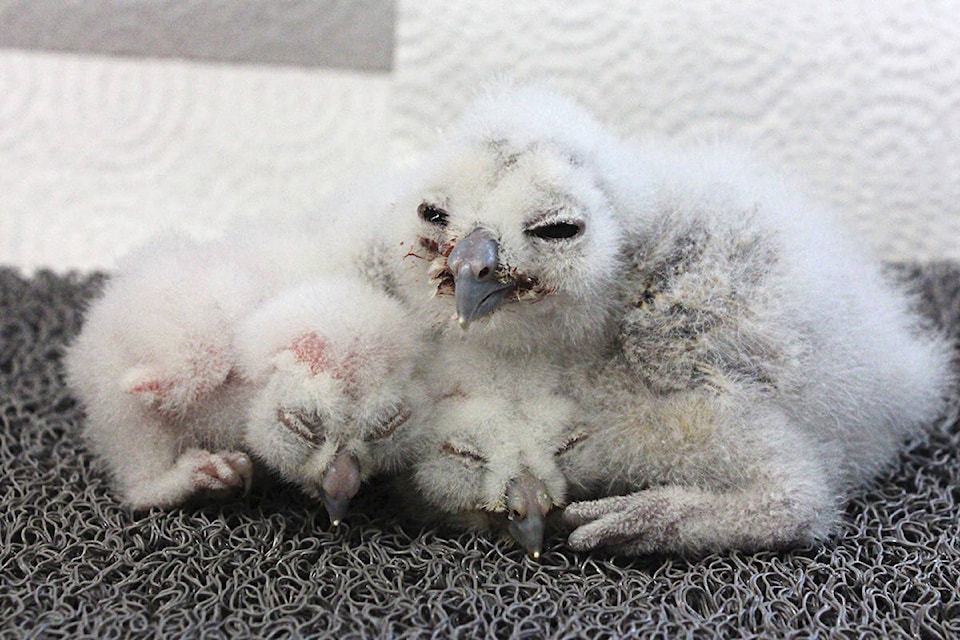Langley’s Northern Spotted Owl Breeding Program (NSOBP) has announced the hatching of three chicks so far this spring, with the possibility of a few more.
That’s a big deal when the total wild population in Canada is estimated at just 10 individuals.
Based in Fort Langley at the former Mountain View Conservation Centre, the provincially-funded program has 25 adult owls, including five mated pairs.
“We were so overwhelmed with the support of the public over the last two years and are happy to share these amazing owls again this year!” said Jasmine McCulligh, facility coordinator at the breeding program.
One of the newly hatched chicks, dubbed Chick F, can be viewed by livestreaming webcam, said McCulligh.
READ MORE: ‘Best breeding season yet’ expected for Langley’s endangered owls
“This web camera gives an intimate look at the growth and development of a Northern Spotted Owl chick… on the nest, which is a unique experience and great learning opportunity for everyone interested in the breeding program,” she said.
For 10 years, the BC Conservation Foundation has been painstakingly working to bring back the endangered owls from the brink of extinction in this province.
The centre raises and feeds their owls in large netted enclosures, big enough to allow the owls to fly and even to hunt live prey at times.
Breeding the owls has been painstaking work.
Chick F was born after 32 days of artificial incubation, and 87 hours of hatching. It was returned to foster parents Skalula and Oregon on May 7.
The hope is that raising a chick together will further bond Skalula and Oregon, encouraging them to produce chicks of their own in the next season.
The peak times for activity on the nest is between 8 and 11 a.m., and 6 and 10 p.m.
This is when keepers provide food to the adults, who will eventually deliver some to their chick.
Skalulua is expected to stay on the nest most of the time early on to keep the chick warm, said McCulligh.
The parents of Chick F’s egg are Scud and Shania, who have already successfully produced two owls – Elliott in 2016, and Dante in 2017.
Along with Chick F, Chicks G and J were hatched in April, both to newly-bonded breeding pairs.
There are currently just 20 adult owls in the program.
The goal is to increase the numbers, eventually having 10 bonded breeding pairs, and slowly releasing owls back into the wild to increase the population.
If all goes well and the owls are healthy and bond successfully, the first releases could take place as soon as next year.
Eventually, the program’s goal is to boost the wild population to 200 adults by releasing up to 20 juvenile owls per year over 10 to 15 years, sending the new owls into protected old growth forests in British Columbia.
“Part of the recovery strategy for the Northern Spotted Owl is to increase the population size to a more stable, resilient level as soon as possible” says Fish and Wildlife Compensation Program’s coastal region manager, Julie Fournier. “That’s why our board is providing funds, once again, towards this important captive breeding program.”
